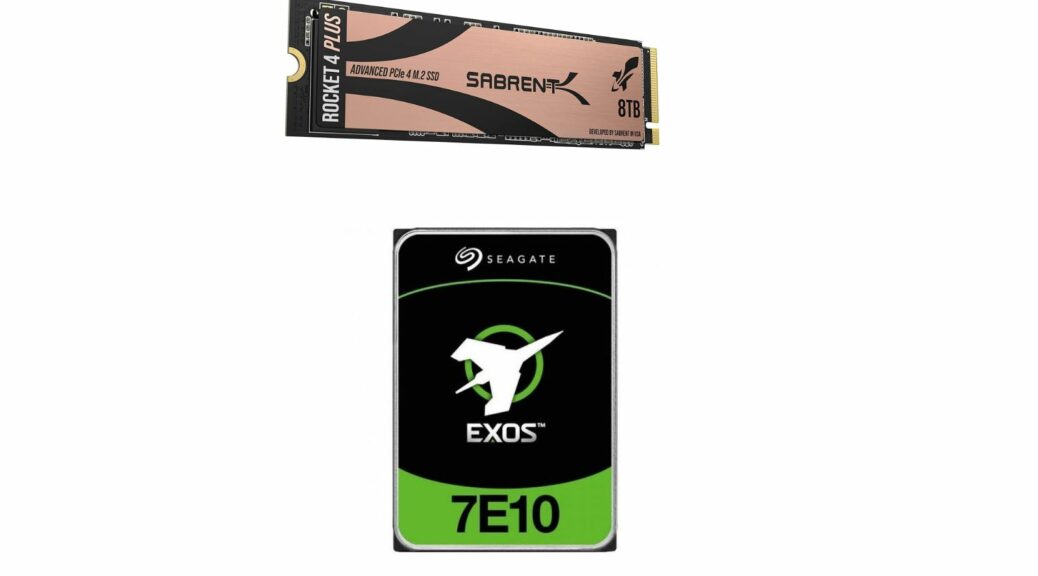I’m amazed at the relentless pace of technology growth and change. I can remember paying US$1,000 for a 300MB hard disk (Mac, SCSI) in the mid-1980s. I just saw some ads for NAS drives this morning, and compared them to NVMe SSDs. There’s a serious HDD versus SSD Widening Price Gap going on right now. It’s worth understanding (and watching) — at least, IMO.
Exploring the HDD versus SSD Widening Price Gap
First, let me lay out some price ranges for you. You can buy NAS drives these days in a range from 8TB to 20TB in size. The smaller ones cost under US$200 these days. (The one depicted is on sale at Newegg right now for a measley US$115 or so.) As NAS drive size increases, so does price. A monster 20GB drive will cost you upwards of US$340. (It’s on sale at Newegg, normally US$20 more.) Do the math, and per terabyte pricing falls between US$14.38 (8 TB) and US$18 (20 TB).
Now let’s look at NVMe SSDs. 8 TB is the biggest you can go with NVMe right now (though there are bigger PCIe card drives, I’ll skip them for the nonce). Most 8 TB drives at Amazon fall in a price range from US$1,000 to $1,120. Again, more math produces a per terabyte price range of US$125 to US$140.
The lead-in graphic shows a Seagate Exos 710 8TB NAS drive (below) and a Sabrent Rocket 4 8TB SSD NVMe drive (above). Prices were plucked from Newegg and Amazon this morning. The ratios is what gets me riled up here: on average it goes from 8.69:1 to 7.77: 1.
Price-Performance Pops!
What this all really means is that HDDs still reign supreme for backup and archival purposes where the fact of storage outweighs read/write times. But as somebody who creates daily backups on important PCs who also occasionally has to restore them, I’ll observe that there’s at least a 4:1 speed difference between the two types of media when restoring a backup (sometimes more).
For those with limited patience or time, and especially for those with limited time windows in which to return to full capability, SSDs are increasingly important for necessary backups and storage access.
One more thing: given the ability to put sizable amounts of blazing fast SSD storage as the near storage tier in a multi-tiered storage architecture means that savvy storage buyers can mix and match these two types of storage ever more effectively. That’s how they mostly do things in data centers for cloud and SaaS providers nowadays anyway (except they don’t balk at spending huge amounts on top-tier SSDs like those described in this mind-blowing TechRadar story).
At this bleeding edge of the storage market, it’s clearly a case of “you can’t afford to do this at home” (unless you’re a centi-millionaire or better). But it’s interesting to contemplate how all kinds of drives keep getting bigger, and how storage architects keep figuring out how to deliver ever-huger amounts of data ever more quickly. Again: amazing!
